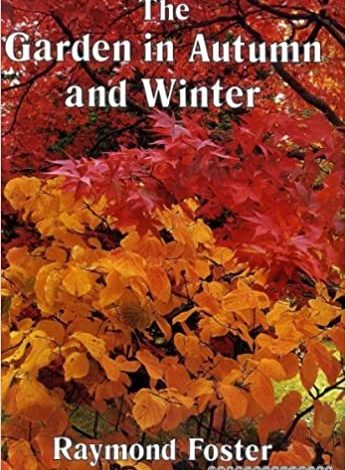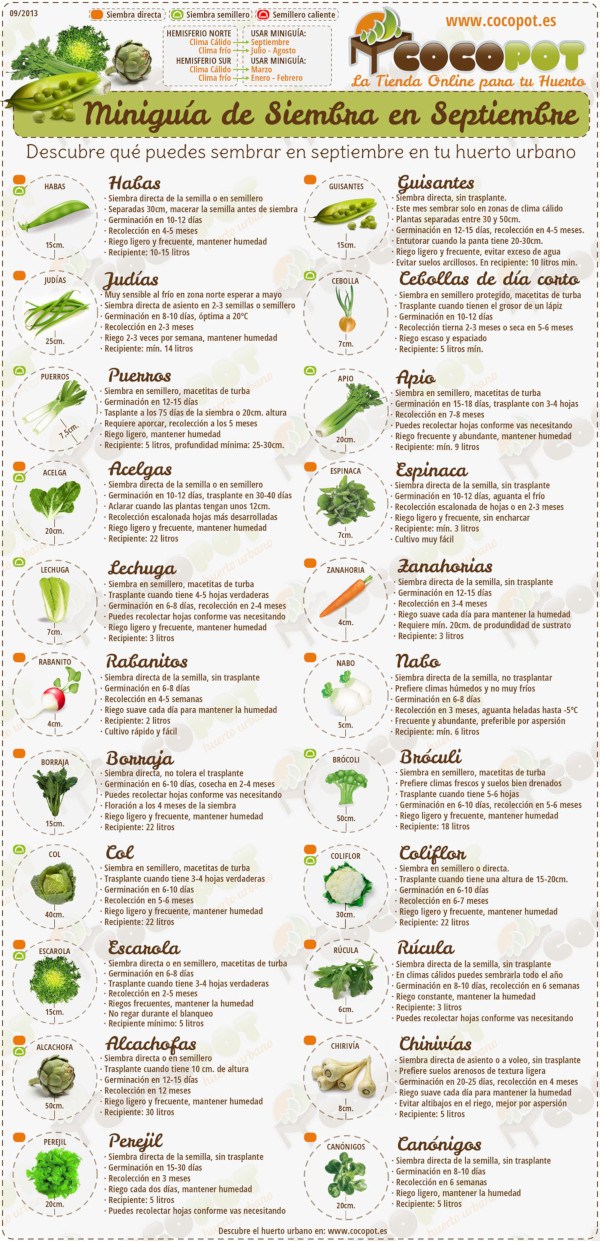The Garden in Autumn and Winter

Very good to all Agrohuerters. Today I come to tell you a little about what we can plant in our garden during the autumn and winter months, a bad time for some species but great for others if we take a little care and prepare the land correctly. Let’s see how to take care of the garden in autumn and winter.
How do you know the phenological cycle of each plant is different, some need more or less water, it also happens with the cold since some species appreciate it, they even need a number of hours of cold per day for their fruits to ripen correctly… So without further ado Let’s see what characteristics the orchards have at this time of year.
Characteristics of the orchard in Autumn-Winter
Well, this is a bit of a draw, but in these times we have to take into account two climatological factors that will affect our crop to a greater or lesser extent depending on the characteristics of our area, I am referring to the cold and the rain.
There are many winters, in some areas they can be so mild that the crop does not need protection structures against the cold, such as greenhouses or strategically placed plastic, this also depends on the species that we plant.

My advice is very simple, sow what you sow during these months, even in January, cover it with plastic or try to make a small greenhouse (you can do it with an egg carton) if you plant seedbeds or sow the seed directly, that way you heal in health if a bad cold day comes to you and ruins your garden.
If you buy directly the seedling already » made «, you do not have to be so cautious since the plant has already passed the critical phase of germination and has a well-formed structure to withstand the cold. Especially if it is bulbs, tubers, rhizomes or root plants such as onions, carrots, beets… Although all this depends, as I have already told you, on the type of winter you have.
Another important factor is water, in this aspect you can almost forget about watering the garden since these times are usually associated with rains that will wet the profile of your soil, this aspect combined with the low amount of sunshine will prevent losses due to evapotranspiration by maintaining the soil wet rain after rain. Water acts as a thermoregulator, being more complicated to freeze a soil or a plant that is wet since water releases heat when it is transforming into ice, so you can always give a watering when the temperature reaches 0ºC and thus prevent the possible frost of your plants. You will have to be vigilant!
You must pay attention to the drainage of the soil in the orchard in autumn and winter, to prevent excess water from flooding the profile, this can rot the stems and roots of your plants, try to keep the soil uncovered so that the sun can affect him warming it up and preparing the bed correctly before planting, turning it over with the hoe, etc. This way you will favor its drainage.
What do we plant in winter in the garden?
Once we have seen the changes that our environment is experiencing, we will choose the species to plant based on our climatic and agronomic characteristics of the soil (that is asking any local farmer: «What works best in this area?»).
Planting dates and calendars also help, at a glance we can see which species are viable and their requirements. Although I personally believe that the best calendar is that of the local market gardeners themselves, if you are starting out in this it is more worth asking them to find out their advice and experiences about the varieties that work best in your area, rather than the information that you can get from a planting calendar on the internet.
Without further ado, let’s see what species are recommended to plant at this time:
Lettuce, cauliflower, escarole, chard, broccoli, cabbage…
All these vegetables, which children are so excited about, are ideal for planting at this time since they resist the cold quite well. I have grouped them together because they complement each other quite well and have similar requirements. They are usually sown in seedbeds previously and once they are planted, their harvesting is very simple since they are harvested when the plant is ready. It is recommended not to sow them when it is still hot to avoid bolting.
Radishes, carrots, beets, turnips…
These root plants require a loose soil and without elements that are too thick (stones, etc.) for their correct development, since they will seek to develop in depth and these impediments can stop their growth. They are usually sown directly.
peas and beans
It is advisable to protect this crop if there is a risk of frost and it is not very appropriate to associate them since they are from the same family. Here we can see which crop associations are more beneficial.
And of course: Onions and garlic
They are the stars of this time since their cultivation is very simple. The garlic clove is usually sown directly on the ground and the onion is usually sown in a seedbed prior to transplanting.
As I suppose you will want more information, I am leaving you with a mini planting guide with specifications on phenology and this article on the care of these plants outdoors in case you dare to plant them soon.

All the best !

![Photo of How to Fertilize Avocados: [Methods, Dates and Components to Use]](https://www.complete-gardening.com/wp-content/uploads/2022/08/how-to-fertilize-avocados-methods-dates-and-components-to-use-390x220.jpg)
![Photo of Spanish Plants in Danger of Extinction [List + Images]](https://www.complete-gardening.com/wp-content/uploads/2022/08/spanish-plants-in-danger-of-extinction-list-images-350x220.jpg)
![Photo of Albizia Julibrissin: [Cultivation, Irrigation, Associations, Pests and Diseases]](https://www.complete-gardening.com/wp-content/uploads/2022/08/albizia-julibrissin-cultivation-irrigation-associations-pests-and-diseases-300x220.jpg)
![Photo of How to Plant Grama Step by Step: [Guide + Images]](https://www.complete-gardening.com/wp-content/uploads/2022/08/how-to-plant-grama-step-by-step-guide-images-390x220.jpg)